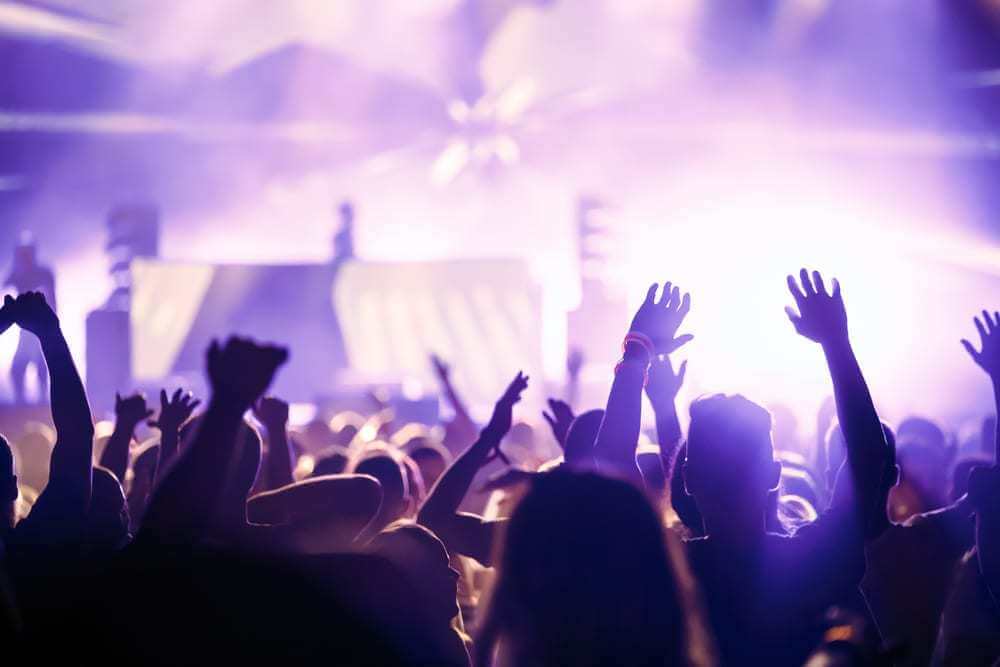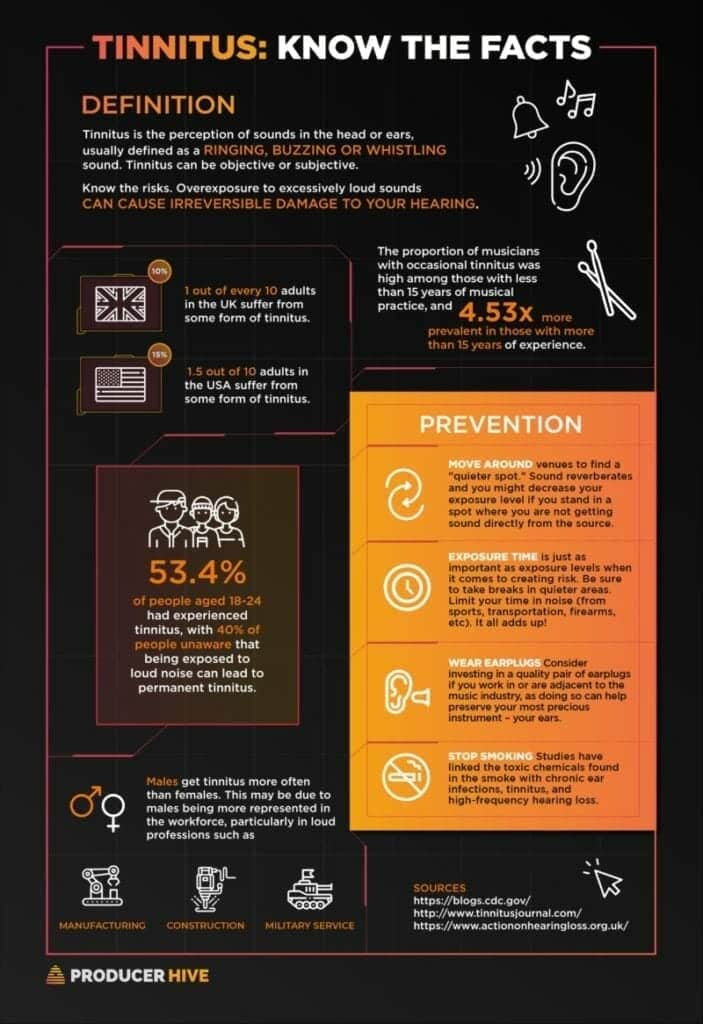Musicians experience the world a little differently, especially when it comes to their relationship with sound. They create art that profoundly impacts lives – whether fans are getting their groove on at a music festival or savoring a classical symphony. Musicians tap into the most sophisticated parts of the human psyche to create art with sound. This art would not be possible without a musician’s first instrument, their auditory system. The greatest irony of a musician’s art is that it poses an occupational hazard. The very essence of a live musical performance, the volume and length of time that music is played, can cause permanent hearing injury to those playing and enjoying it. In fact, musicians are four times more likely to develop music-induced hearing loss and tinnitus. The good news? You don’t have to stop the music. Instead, read on to learn about hearing protection for musicians and fans.
Try Musicians’ Earplugs
Earplugs are a musician’s first line of defense against music-induced hearing loss and tinnitus. While cheap foam earplugs are widely available, they can muffle or distort sound. Alternatively, high fidelity filtered earplugs are designed with music and communication in mind because they lower sound evenly across frequencies, making music sound more natural. Many musicians avoid cheap earplugs for that reason. Custom earplugs are also widely used by concert attendees to prevent hearing injury. Work with an audiologist to determine which hearing protection option is best for you.
Opt for In-Ear Monitors
Instead of earplugs, musicians might opt for in-ear monitors (IEMs), which are devices that, when used correctly, can offer several auditory benefits.
First, IEMs offer a solution to the volume war and poor sound quality that occurs on stage when using wedge-shaped floor speakers. Musicians must hear themselves over a variety of competing sound sources, so regulating the volume of these speakers is difficult. Second, IEMs can be custom-molded to your ears, offering a better fit and improved sound isolation when compared to one-size-fits-all options. IEMs also boast improved pitch perception, portability, more consistent sound quality from venue to venue, and less vocal fatigue. However, beware! IEMs are not safety devices even if they are marketed as such. The only way an IEM can be used safely is when the musician using it consciously lowers volume levels within their “mix,” or sound signal. There are many different strategies to achieving this.
Another important factor of safe IEM use is to keep both earpieces in at all times, as one open ear is the most dangerous way to use IEMs. The practice of taking one earpiece out fills the void of ambient sound and spatial timing cues that fully isolating IEMs take away. However, with motivation and consistent practice, using both earpieces together can be done! Since sound safety levels within the music industry are unregulated, it is completely up to the musician to monitor sound levels and in-ear monitor use.
Use a Decibel Meter
Unlike solid objects, sound travels in waves, making it difficult to measure on a standard scale. Levels of sound are measured in decibels (dB), which represent a logarithmic scale that increases by powers of 10. There are two safety scales that calculate hearing loss related to loud sound exposure.
A little context: The average decibel level of human conversation is around 60 dB. Now, think about the volume level of the instruments to which musicians are exposed. For example, the average drum set typically produces at least 100 dB of sound, which can cause significant hearing damage over time.
Decibels can be confusing, but there are several tools that musicians can use to keep volume levels in check. Decibel meters allow musicians to visually see volume levels as they rise and fall. That, in turn, can alert musicians to unsafe volume levels. Decibel meters are easily accessible via several smartphone apps, some of which are free. These apps have limitations and, as a rule, stop measuring sound accurately at about 100 dB. At this volume level, ear plugs should be used for the full exposure to sound. For any sound levels at or above 85 dB, ear plugs should be considered depending on how loud and how long the sound exposure will last.
A good rule of thumb when you don’t have a way to measure sound: if you are within an arm’s length distance (about two to three feet) from a person and you must raise your voice to be heard, assume the sound level to be at or above 85 dB and use hearing protection accordingly.
Consult an Audiologist
Of all our recommendations regarding hearing protection for musicians, the most valuable tool a musician has to prevent hearing injury on the job is annual hearing testing. Why? The only way for musicians to know if they are keeping their first instrument safe is to compare hearing thresholds year after year. Working with an audiologist will help you track any hearing deterioration, which can inform and change hearing protection strategies. Also, studies show that musicians who report hearing disorders use hearing protection more frequently than those who haven’t yet experienced any issues.
Regular trips to the audiologist are beneficial for everyone, just like seeing your dentist or optometrist year after year. Since the music industry is not regulated or protected by sound safety regulations like other industries, it’s especially important for musicians to have an audiologist on call.
_____
The show must go on – but that can be a challenge when your hearing health is at stake. The audiologists at Sound Relief Hearing Center have the expertise to select the best hearing protection for you.
If you would like to learn more about hearing protection for musicians, reach out to Sound Relief Hearing Center in Colorado or Arizona. We are independently owned, so we always have the patient’s best interest at heart. Plus, our state-of-the-art technology ensures that our patients receive the best treatment available. With our unparalleled excellence in the hearing industry, our dedication to patient care, and our commitment to helping people control and conquer their hearing issues, you can count on Sound Relief Hearing Center. To learn more about us, please browse our website, visit our YouTube channel, or give us a call at 720-344-7600. You can also schedule an appointment online to meet with one of our audiologists. We look forward to hearing from you!
At Sound Relief Tinnitus & Hearing Center, we provide hope and help to those living with tinnitus and other hearing health issues. Our patients are at the center of everything we do, and we strive to guide them to overcome their challenges by delivering innovative and compassionate healthcare.
Dr. Julie Prutsman, owner of this family-owned practice, has expanded to 9 locations across Colorado and Arizona. In 2012, she founded Sound Relief in her hometown of Highlands Ranch, Colorado and continues to foster their mission through mentorship of the brightest minds in the field of Audiology.


